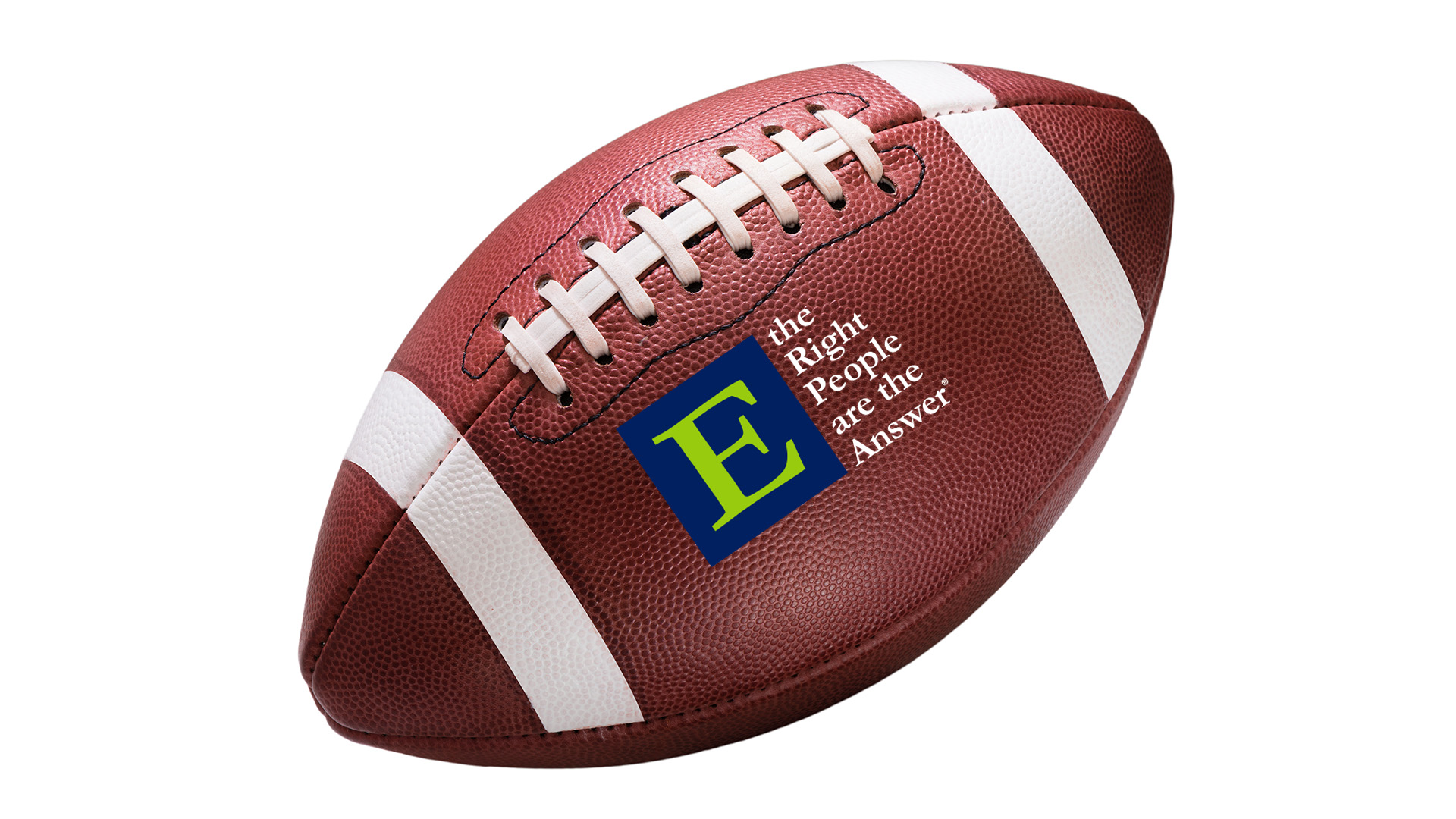Your company in on the clock…
Happily, you’re not alone. There are 32 NFL teams with you.
The 2023 NFL Draft is upon us, and with it the annual debate about which quarterback should go with the number one pick, what teams should trade up or down, who’ll be the steal of the draft and who’ll be the biggest bust. Strip away the hoopla and hyperbole, though, look past the pomp and the prognostication, and the NFL Draft comes down to one thing:
the Right People.
“You want to hire team players who have a positive attitude,” says Ray Pereira, Vice President of Talent Acquisition & Development at Eclaro, “people who have a strong work ethic and are willing to put in the effort to succeed.”
So, as you’re cheering (or jeering) along, consider what the NFL Draft can teach us, remind us, clarify and illuminate for us, about the process of finding the Right People, the very best candidates, no matter the position, industry or moment.
Identifying Talent: Teams don’t simply look at a list of players and make their pick, sight unseen, then hope for the best. Months, sometimes years, of evaluation go into identifying top choices and then ultimately choosing the right player.
Reviewing and comparing resumes to assess the available talent, conducting interviews, holding skills evaluations—it’s all part of the process. It takes years of expertise to get that process right, and it takes a team of experienced experts to usher along that process, year after year.
“Know your audience better than they know themselves,” Pereira says, highlighting a key element in identifying the right talent.
Understanding Evolving Talent Pools: At the inaugural NFL Draft in 1936, teams had only a pool of 90 players to choose from. Times have certainly changed. Today, with pretty much the entirely of college football available, along with such initiatives as the International Player Pathway program, the talent pool is truly global and always growing—and the best teams and recruiters thrive in that world.
“Broadening your talent pool means increasing your chances for not only finding exceptional team members, but finding more of them,” says Eclaro Co-Founder Paul Sheridan. “Whether you’re looking for a shutdown corner or a Python Engineer, leading organizations understand the power of the global talent pool and how it can transform a team and a business.”
Evaluating Candidate Skills: A blazing time in the 40-yard dash. An eye-popping Wonderlic score. A national championship and a few NCAA records. Seems easy to figure out if a player’s skills and resume will translate to your team and make an immediate—and long-term—impact. It’s not.
Successful NFL teams, likes successful businesses in any industry, look beyond the surface to evaluate not just the “measurable skills” but also how those skills fit the role that needs to be filled, and whether they will translate to a new role. Of course, not every team does that, and not everyone nails it every time.
Remember Archie Griffin, the only player to win two Heisman Trophy awards in college…but his NFL career showed only seven touchdowns in seven years. Or Ryan Leaf, who seemed to have every physical tool to be a number two pick but was, um, lacking elsewhere. Names like Josh Rosen and John Ross III ring any bells? We can go on and on. They were can’t-miss candidates who missed. The reasons range from not fitting the position or the NFL culture to not being willing to do what it would have taken to succeed.
“On the other side of that coin is somebody like Brock Purdy,” Eclaro Co-Founder Tom Sheridan reminds us. “He was the very last person picked in the 2022 draft, Mr. Irrelevant. Yet there were people who saw something in him, who didn’t want to miss the opportunity to bring him onboard. And he went on to being one freak injury away from possibly leading San Francisco to the Super Bowl a few months ago. It takes experienced talent evaluators to not only find the Right People, but to know how and when to bring them into an organization.”
Assessing Culture Fit: The skills listed on a resume, and even those demonstrated in prior work environments, are certainly important, but they are not the only harbingers of success. An ideal candidate will also fit within a team’s culture.
The key, Pereira says, is to “determine first if the candidate is a culture fit and aligned with your organization’s values. Does the candidate possess the innate skills to be effective in the role, and does the candidate possess the learned skills required to add value.”
Considering Future Potential: Tom Brady, the greatest quarterback of all time, was not selected with the first pick in the NFL Draft. Not the second, either. Nope, not third. How does the 199th pick strike you? Future Hall of Famer Aaron Rodgers was an unknown 5'11", 175-pound senior at Pleasant Valley High School in Northern California, then went to junior college and grew to 6'2" and 200 pounds, went to Cal Berkeley, waited behind Brett Favre (we’ll talk about a strong bench some other time) and became a Super Bowl champion and four-time NFL MVP.
Few people saw either of those outcomes on the horizon—yet somebody did. The Right People are not only the job prospects themselves, but the people who scout, assess and recruit the talent and can spot that kind of potential all the time.
Seeing a propensity for and path toward growth in a candidate for any job is essential to both a company’s and the candidate’s success—and it takes special talent evaluators for a team to benefit from such vision.
So as the draft picks fall, as we move from number one to the final pick on the final day and the names move off the board, immerse yourself in all the event has to offer. Embrace the emotion, celebrate the surprises, and pay attention to the analysts as the experts break down the pros and cons of each pick. Each one just may reveal a little bit about the ability to identify talent and evaluate skills, to assess culture fit and to anticipate future potential, and show how each of these steps contributes to building strong teams.
“Building strong a team,” Pereira says, “requires you to know what makes each team member tick and the entire team click.”
Because strong teams always come down to drafting the Right People.




